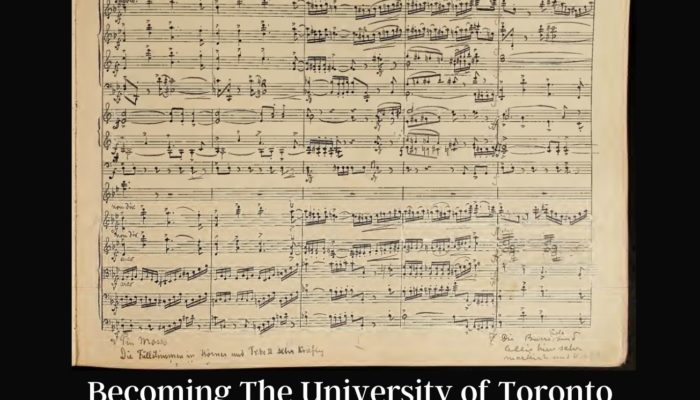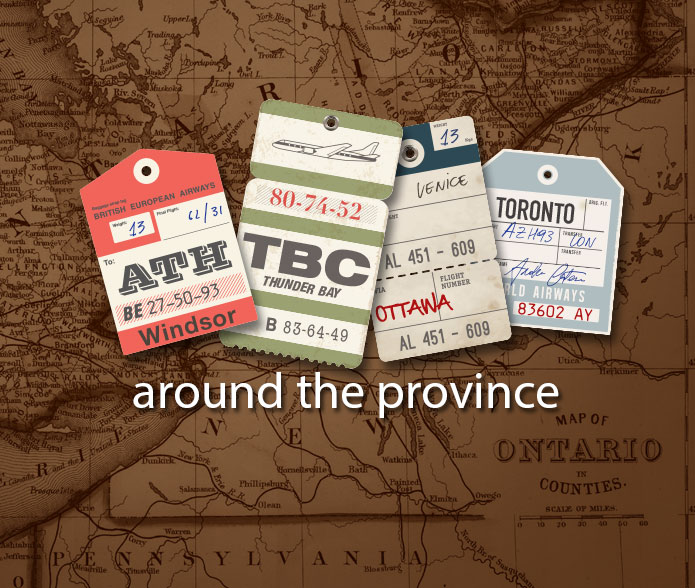Can mentorship help you in a career transition? Toby explores this as he recounts his decision to walk away from a tenure-track faculty position to become a librarian. Through OLA MentorMatch, he met with Jennifer Peters who helped him find where to focus on his job search.

Supporting equity, diversity and inclusion at the University of Toronto Music Library
In 1921, the Faculty of Music at the University of Toronto (which had been established in 1918) took over the operation of what was then the Toronto Conservatory of Music’s library. This year marks our 100th anniversary, and we are grateful to the editors of Open Shelf for the opportunity to document our history, current state and special collections in a series of articles over the coming months. This month, Tegan Niziol (graduate student library assistant) will outline the Library’s initiatives to engage in an active effort to increase equity, diversity and inclusion in the support we provide for music studies.
By Tegan Niziol
Over the past year, members of the University of Toronto Music Library team have taken on significant projects to change how the Library operates and the resources we provide:
- James Mason (metadata and digital initiatives librarian) created a program to identify the nationality and gender of composers represented in our score collection. This information will be used to help us to increase the visibility of underrepresented composers in our collections and identify and fill gaps in our collections.
- James Mason, Elizabeth Robinson (Toronto academic libraries intern) and I took on leadership roles in the Black History Wikipedia Edit-A-Thon, organized by the University of Toronto Libraries and community partners. Throughout the month of February, we came together with other avid music Wikipedians to add approximately 6,920 words and 136 references to 17 different music pages.
- Elizabeth Robinson and Rebecca Shaw (music archivist), in conjunction with Hillary Chu, Claire Latosinsky and Rosemonde Desjardins (members of the Faculty of Music Anti-Racism Alliance) created the digital exhibit Polyphony: Diversity in Music which features interviews with BIPOC (Black, Indigenous and People of Colour) artists and their recommendations of BIPOC music and resources.
- Tim Neufeldt (instructional librarian), with the help of Ines “Ness” Wong and Leighton Harrell (student library assistants), searched for items from known lists of BIPOC music and literature in our library catalogue and compiled a spreadsheet that lists music and resources by and about BIPOC musicians and identifies gaps in our collections. Trevor Deck (music and film collections management librarian) will work on procuring items to fill the gaps once acquisitions staffing returns to normal levels after the pandemic.
- Tim Neufeldt and I are currently creating a series of instructional videos in which we feature content by and about BIPOC artists.
My most involved and on-going project is a research guide to BIPOC musicians and related literature created under the supervision of Tim Neufeldt. The guide’s purpose is to help students find and access materials by and about BIPOC musicians. It contains an expansive collection of resources on various topics ranging from literature on diasporic popular musics to guides on inclusive writing practices.
Although I set to work on the guide with the intent of creating an educational resource for others, the process has also stimulated an ongoing period of personal and professional growth in myself. While creating the guide, I learned more about conscious and inclusive language, and grappled with issues such as tokenism (or, only undertaking symbolic efforts when doing equity, diversity and inclusion – EDI – work). For example, I learned that although the term BIPOC was created as a modified form of POC (People of Colour) to specifically recognize Black and Indigenous people, who face severe systemic racism in North America linked to the history of slavery and colonial oppression, it can still serve to homogenize and mask diverse identities. Thus, while it is appropriate to use the acronym in some broader contexts, it’s best to be as specific as possible when referring to the identity of an individual, group, or culture. In terms of the research guide, Tim and I decided to use the term BIPOC in the title because our goal was to find ways to support the musical traditions of many different people who face racism and oppression based on the colour of their skin. Although the guide itself is designed to help students find music, research and resources for a diversity of traditions, many of the individual items focus on very specific musical practices, in specific locations, and by specific people. In these cases, language much more precise than “BIPOC” is used to identify and describe musical practices.
As a white settler Canadian and music scholar who specializes in Western art music, I also struggled with ensuring that I meaningfully represented diverse musical traditions without engaging in tokenism. To address these concerns, I attempted to make the guide as comprehensive as possible while simultaneously thinking about my own familiar, local context – in this case, the University of Toronto. First, I used the guide to direct students to resources that were designed to be more comprehensive such as databases, research bibliographies, dictionaries, encyclopedias and journals dedicated to specific BIPOC musical traditions. Second, I focussed on my local context by featuring Crescendo, an online series created by the Faculty of Music Undergraduate Association which showcases BIPOC musicians; Polyphony, the digital exhibit which contains interviews with various BIPOC artists, many of whom are UofT students, faculty and alumni; and finally, scholarship on BIPOC musical traditions conducted by UofT professors.
In the past academic year, the guide has functioned as a living document that I continually update and modify as I learn more about BIPOC musical traditions and the ethical considerations regarding EDI work. As the home page of the guide indicates, I eagerly welcome feedback and recommendations as I strive to make BIPOC music and research more visible and accessible for students at the Faculty of Music. Please feel free to check out the guide and email me at tegan.niziol@mail.utoronto.ca with suggestions!
Tegan Niziol is a fourth-year PhD candidate in musicology at the University of Toronto. She earned her Bachelor of Music (2014) and Bachelor of Education (2015) degrees from Queen’s University, and her Master of Arts in Musicology degree from the University of Toronto (2017).
